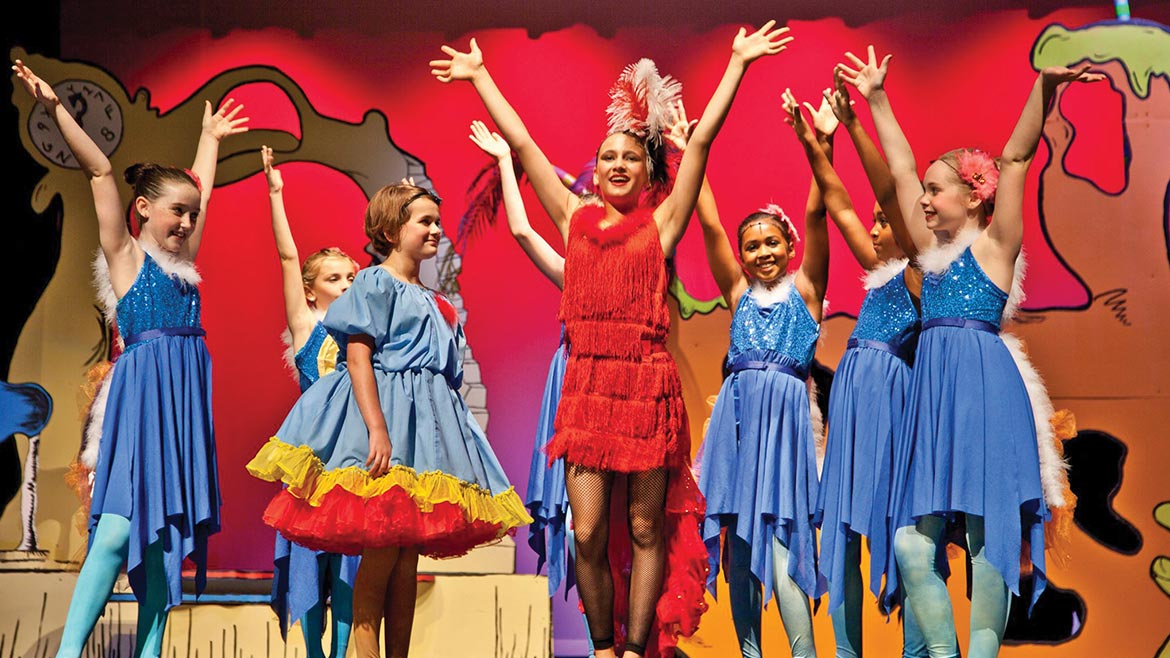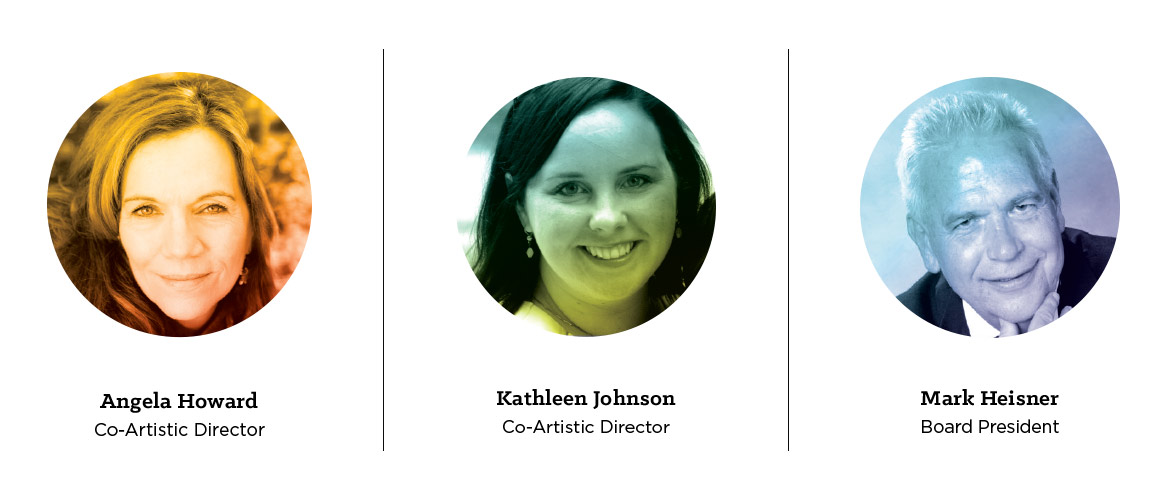PACE: Life’s Biggest Role

PACE — an acronym for Performing Arts in Children’s Education — sets high expectations for its performers and crew. Sure, they’re all children. But they have a job to do.
“We treat these kids the same way we would treat them if they were in a professional theater,” Angela Howard, PACE’s co-founder and co-artistic director, says. “This is a professional show . . . we’re not just being cutesy.”
And that’s the point. PACE uses its programs, which include classes on things like stagecraft and vocal technique in addition to its stage productions, to teach kids about the real world. That means not indulging (or, at least, not overindulging) cutesiness.
“We feel the performing arts — and not just theater, but also music and dance — are an integral part of children’s education,” Howard says. “If they can’t appreciate art, there’s not much more for them to appreciate.”
A Place at the Table
Howard, an MU alumna who now has 40-plus years of professional performing experience, began collaborating on an idea with colleague Deborah Baldwin, PACE’s other co-founder, in 2003. Informed by their own experiences as children (putting on plays in their garages), they were both dissatisfied with mainstream children’s theater. They wanted a chance to make real theater — just with children.
Mark Heisner, manager of Encore Travel Group and current PACE board president, has two daughters who grew up in musical theater, and he saw how performing helped them build confidence and learn communication skills that they couldn’t develop in a classroom. His family’s experience matched some of PACE’s core beliefs. “Our goal is, initially and foremost, to give kids confidence,” Heisner says.

Kathleen Johnson, PACE’s current co-artistic director, moved to Columbia in 2015. She had also been involved in theater from a young age and was familiar with the problems that young performers typically face: choosing between working on a subpar show or working on a show that emphasized competition over education. PACE immediately impressed her.
“Doing what’s in the best interest of a child does not mean that any corners have to be cut in the professional execution of a show,” Johnson says. “And that, I think, is the best marriage you can find when working with kids.”
PACE puts on five to seven shows per year, built for different experience levels. Their production of “Charlotte’s Web” will run November 12 and 13, and “Alice in Wonderland” will run from November 17 through 20.
PACE also offers classes to teach children — starting as early as age 3 and continuing through fifth grade — how to perform. PACE students can then move on to PACE Academy, where they continue training with a focus on performance. The group’s teaching philosophy closely follows the American Alliance for Theatre and Education, an arts education advocacy group.
Students can also use PACE for community involvement; a group of young actresses playing Disney princesses visited MU Women’s and Children’s Hospital in February to give valentines to patients.
A New Home
“Over the past year,” Johnson says, “the organization was looking at how to move ourselves to the next level.” After more than a decade spent establishing PACE’s foundation and tinkering with its strategy, they had figured out how to educate kids in the way they wanted — now they had to figure out how to reach more of them.
A major step forward was relocation. PACE’s old home, off Big Bear Boulevard in north Columbia, was getting, as Howard puts it, good on space, but not on publicity. PACE was too isolated, too separate from the rest of the arts community. Their new space, in the middle of the North Village Arts District, puts them in the middle of natural collaborators.
“It brings us into the arts community downtown,” Johnson says. “It makes us centrally located. Everybody, all over town, is an equal distance away.”
That makes PACE an accessible option to a wider range of kids, and it also integrates the theater into Columbia’s already thriving art scene. Howard says they’ve already talked about collaborating with the Columbia Academy of Music and the Citizen Jane and True/False film festivals. “We’re wanting to do those kinds of things so we can not just be the entity we are here, but we can be a place where other groups feel like they can come in and use our space,” Howard says. “That’s really a big thing in Columbia, because we have lots and lots of arts and we share a lot of things. The more collaborative we can be with other groups, the better for everyone.”
PACE is building other connections as well, including a partnership with Columbia College and Columbia Public Schools designed to teach performing and education majors the value of theater as a teaching tool. PACE is also ramping up fundraising, coordinating a capital campaign to help bolster their new building and scholarship program.
At this point, PACE has built up a sizable group of alumni (they have more than 120 listed on their website), and some have gone on to pursue theater in college and beyond. But even for those who don’t, theater stays with them. Heisner says his two daughters, now in their mid-20s, are still friends with the kids they met in theater, and they use the skills they learned — confidence, communication, teamwork — everyday in their careers. Those are the stories PACE wants to create.
“Theater transcends more than just putting them on the stage,” Howard says. “It transcends every part of their life.”


